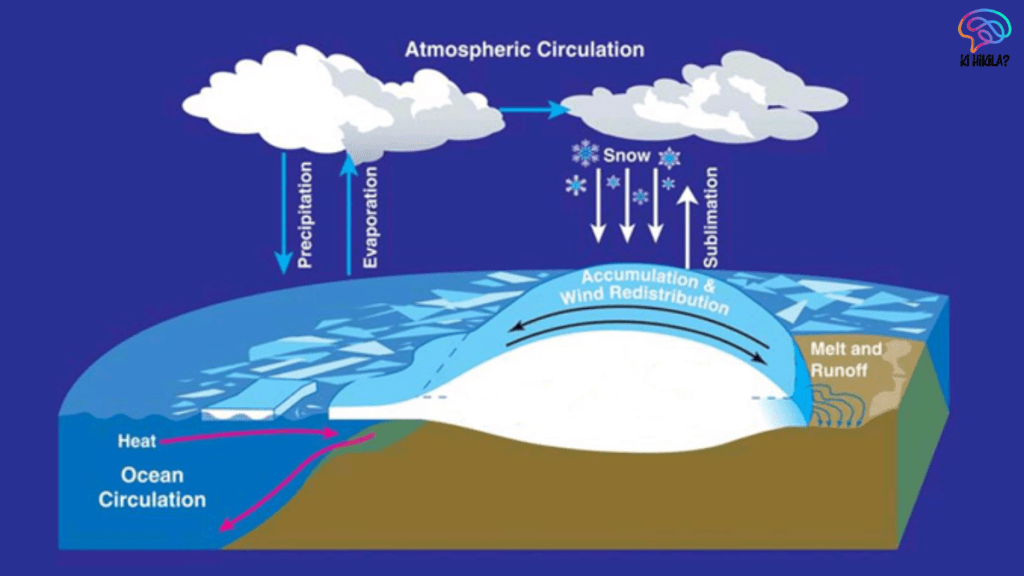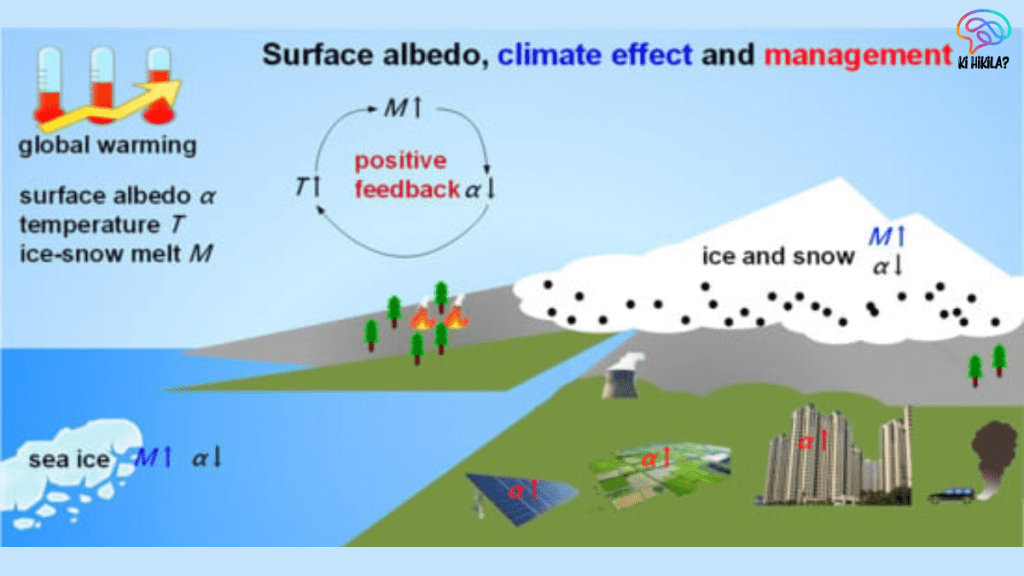Albedo’s impact on climate science and global warming is a critical area of study that shapes our understanding of Earth’s energy balance and the escalating effects of climate change. Albedo, defined as the proportion of incoming sunlight reflected by a surface, plays a pivotal role in regulating surface temperatures and influencing climate feedback mechanisms. As a fundamental concept in climate science, albedo affects how much solar energy is absorbed or reflected by Earth’s diverse surfaces—ranging from icy polar regions to dark ocean waters—and has significant implications for global warming mitigation strategies.
What is Albedo?
At its core, albedo measures reflectivity, expressed as a fraction between 0 (a perfect absorber, like a black body) and 1 (a perfect reflector, like a mirror). The term encompasses the ratio of radiosity (reflected radiation) to irradiance (incident radiation) on a surface. This value depends on surface properties, such as color and texture, as well as the spectral and angular distribution of sunlight, which varies with time, location, and atmospheric conditions. For instance, fresh snow boasts an albedo of approximately 0.9, reflecting most sunlight, while charcoal, with an albedo of 0.04, absorbs nearly all of it. Earth’s average albedo is about 0.3, a composite of contributions from clouds, land, and oceans.

Albedo measurements are not uniform. Spectral albedo focuses on specific wavelengths, but the term generally refers to reflectance across the solar spectrum (0.3 μm to 3 μm). Scientists categorize land surface albedo into three types: black-sky albedo (reflectance under direct sunlight), white-sky albedo (reflectance under diffuse light), and blue-sky albedo (a blend of the two, weighted by light conditions). The bidirectional reflectance distribution function (BRDF) further refines these measurements by modeling how reflectance changes with viewing and illumination angles, enabling precise satellite-based estimates.
Albedo and Climate Feedback Loops
Albedo’s impact on climate science and global warming is most evident in feedback mechanisms like the ice–albedo feedback. This positive feedback loop accelerates warming: as global temperatures rise, Arctic ice and snow—highly reflective surfaces—melt, exposing darker surfaces like ocean water or bare ground. These surfaces absorb more heat, further increasing temperatures and melting more ice. This cycle is particularly pronounced in polar regions, where high albedo historically kept temperatures low. The loss of reflective ice cover has contributed to accelerated warming in the Arctic, amplifying global climate change.
Geographic and seasonal variations add complexity to albedo’s effects. Polar regions, despite high albedo, remain cold due to low solar insolation, while deserts, also high in albedo, are hot due to intense sunlight. In tropical zones, slight changes in albedo can lead to significant temperature shifts, underscoring the regional nuances of albedo’s influence.
Human Activities and Albedo Modification
Human activities significantly alter albedo, with consequences for local and global climates. Deforestation, agriculture, and urbanization change surface reflectivity. For example, urban areas, with their dark asphalt and concrete, typically have lower albedo than surrounding croplands, contributing to the urban heat island effect. Studies estimate that increasing global urban albedo by 0.1 could offset the warming equivalent of 44 gigatonnes of CO₂ emissions, highlighting albedo’s potential in climate mitigation.

Innovative strategies are emerging to leverage albedo for cooling. In Spain’s Almería province, extensive greenhouse coverage has increased local albedo, resulting in slight surface cooling. Similarly, Passive Daytime Radiative Cooling (PDRC) technologies enhance surface albedo and thermal emittance to reflect sunlight and radiate heat, offering a promising tool to counter global warming.
Recent Trends and Observations
Satellite instruments like NASA’s MODIS and CERES have revolutionized albedo monitoring, providing critical data on Earth’s reflectivity. Between 1998 and 2017, global albedo decreased by approximately 0.5%, driven partly by reduced cloud cover over the eastern Pacific. This decline has contributed to a warming effect of about 1.7 W/m² since 2010, equivalent to a 138 ppm increase in atmospheric CO₂ concentration. Such findings underscore the urgency of addressing albedo changes in climate models and mitigation strategies.
Implications for Climate Science
Albedo’s impact on climate science and global warming extends beyond measurement—it shapes how we predict and respond to climate change. Understanding albedo variations, both natural and human-induced, is essential for accurate climate modeling. As ice melts and land use changes, albedo continues to influence Earth’s energy balance, driving feedback loops that can either exacerbate or mitigate warming. Strategies like increasing urban albedo or deploying PDRC technologies offer practical solutions, but their success depends on global cooperation and continued research.
In conclusion, albedo is more than a scientific metric; it’s a key driver of Earth’s climate system. By studying and managing albedo, scientists and policymakers can better address the challenges of global warming, making it a cornerstone of climate science and sustainability efforts.



